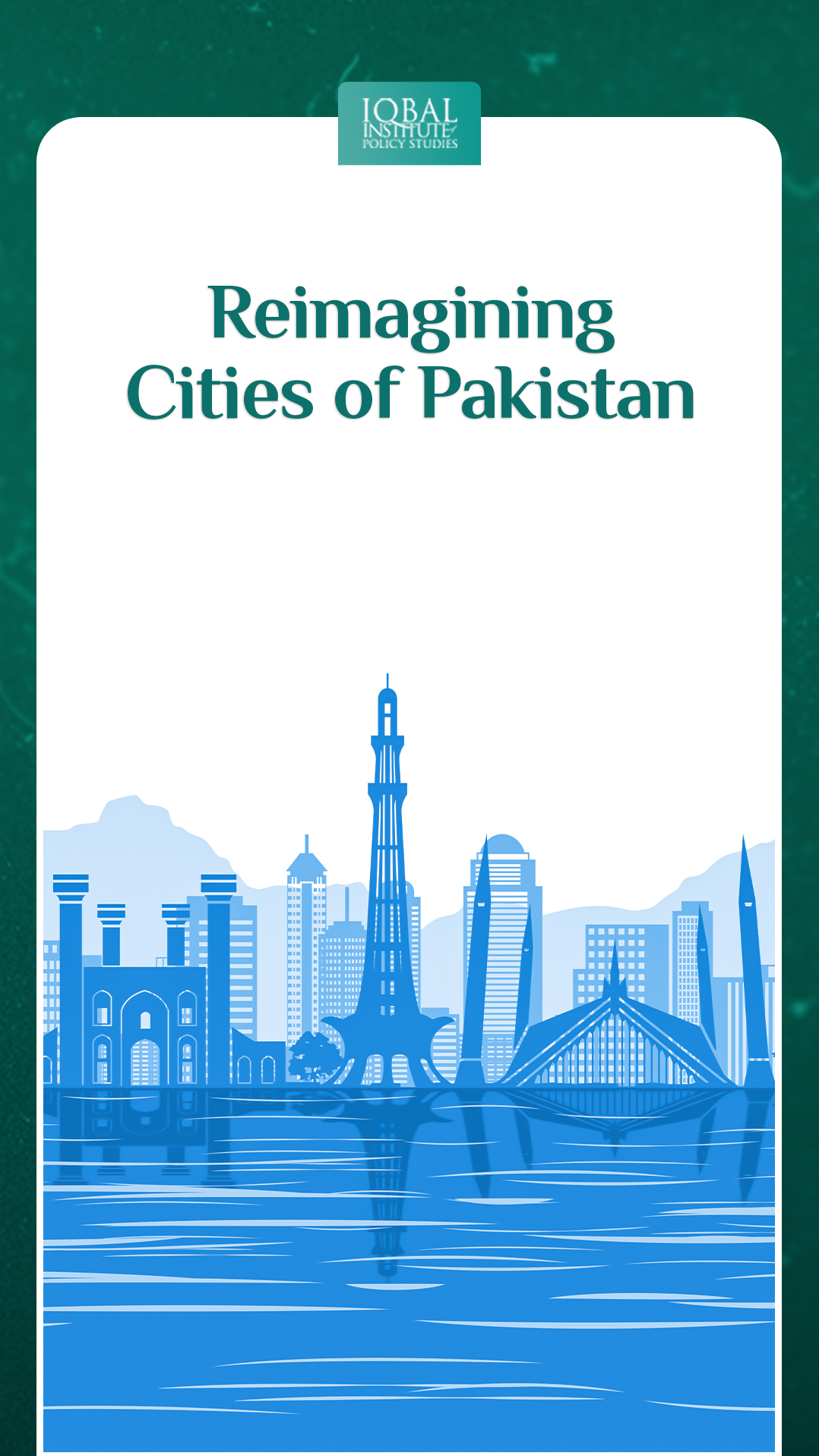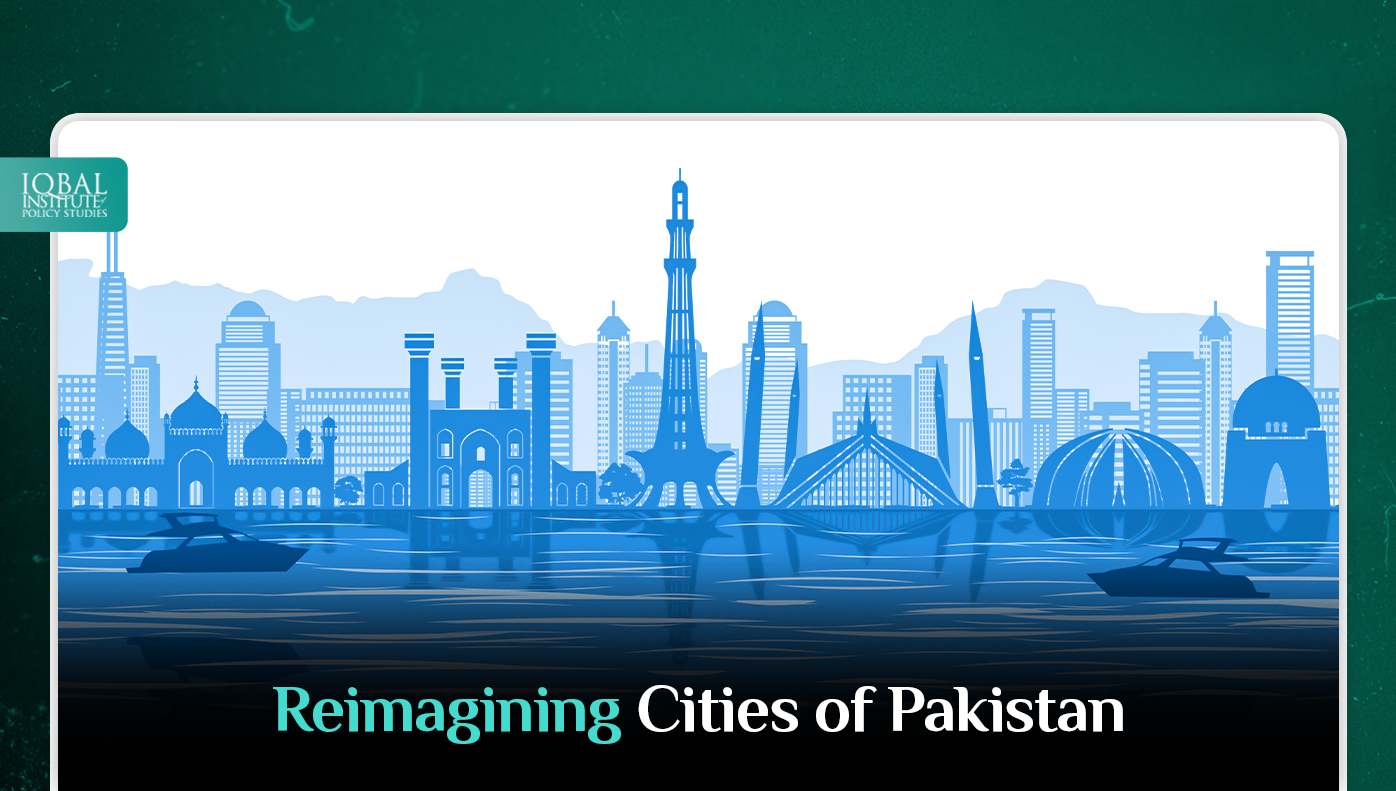Cities are growing at a faster rate due to urbanisation. It was found that more than half of the world’s population lives in urban areas (United Nations, 2018). It is expected to rise to 70% by 2050, with an annual growth rate of 50 -60 million people. The cities consume 75% of natural resources available worldwide, which include fossil fuel, raw materials, energy, water and food. The perpetual and irreversible usage of resources poses challenges for policymakers, planners and other practitioners who are intended to make cities more sustainable.
Air pollution complements urbanisation, 3 out of 15 most polluted cities are located in Pakistan. Moreover, cities in Pakistan generate 20 million tons of solid waste annually. The cities cannot generate maximum revenue due to poor management and policies of urban planners, less engagement of social scientists, lack of sustainable and resilient infrastructure and policies that are not based on data and analytics.
It is imperative to design future sustainable cities, take lessons from the past, and anticipate future challenges. To shift cities from a traditional to a modern framework, the government has to focus on the following key principles—energy, ecology, infrastructure, waste, water, livability, mobility, accessibility, economy, and culture.
Problems in the Cities
Due to the continuous increase in urbanisation, the cities in Pakistan are becoming congested and polluted. As poverty increases, the gap between rich and poor is widening. The country is facing severe economic crises which are due to urban mismanagement. These crises pull more people below the poverty line and affect their quality of living. One main reason is the need for a better governance system under which cities operate.
Main Reasons for the Underperformance of Cities
The Backwardness of the City Management System
The current city management system is based on colonial administration. Among them, policing and land revenue systems are considered the main legacies of the colonial system. Most operations are performed on an ad-hoc basis, and local governments need the autonomy to execute their plan independently without the state’s interference. This intervention leads to low citizen participation in the decision-making and implementation process; cities cannot collect taxes to fund public goods, and safety and security are being compromised, lack of provision of basic amenities etc.
Less Engagement of Social Scientists in Cities Development
The foundation of city planning and management is based on brick and mortar. The town planners and city administrators consider the city an engineering structure as they focus on cement, metal, glass and maximum square feet accumulation in layout. These experts do not engage social scientists in the developing and planning process. These scientists can create a pleasant, livable ecosystem for the citizens. One of the major flaws in the master plan is that experts have never incorporated the changing demographics of Pakistan, which must include facilities that require for a marginal and vulnerable group of the society.
Polices Mostly Focused on Macroeconomic Indicators
Usually, policymakers have an economic background and mainly focus on macroeconomic indicators. The policies barely address the city agglomeration, which means it is an extended city or town area comprising the built-up area of a central place and any suburbs linked by continuous urban area. However, only some policymakers included concept of agglomeration, but its focal point is agglomeration as an industrial cluster. Cities are considered the central point of jobs, innovation and creativity in the developed world. Due to the vested interests of administrators, politicians, urban planners and economists, there have yet to be any policies to target the informal economy, domestic commerce and a startup ecosystem.
Lack of Sustainability and Resilience
Policymakers are making fewer efforts to incorporate the concept of sustainability in the infrastructure development of cities. Moreover, social infrastructure should have given more attention to libraries and public spaces. Most of the projects get approval without even getting an environmental impact assessment.
Moreover, traffic engineers are focusing on making more roads, flyovers, signal-free expressways etc., on facilitating cars, but they don’t give importance to citizen convinces. Due to the increased number of vehicles on roads, as per CEIC data total number of registered vehicles in Pakistan is 6,628,063 units, which increases air pollution. It was found that vehicular emission is an enormous (30-40 per cent) contribution to deteriorating the country’s air quality. While public transport systems like the Metro bus, Orange Line train and BRT have been introduced in some cities, incentives for their use and feeder routes have not come about everywhere. The town planner makes such policies that aim to separate the economic activities from the main city area. This has resulted in long commutes, urban sprawl, and marginalised sustainability goals.
Data do not back policies
The cities are generating a mass amount of data, and there needs to be a mechanism to collect and analyse that data. The Pakistan Bureau of Statistics is usually conducted on the district level without focusing on the city-based datasets. The data collection will help the government to tackle the energy transition, predict the migrant streams, help to match supply and demand in the labour market, to make businesses smarter and support the government in managing mobility and pollution. In short, data science will help the government to make cities more livable.
Recommendations
Livable and inclusive cities can be reimagined by following certain measures:
The government should improve service delivery quality and reliability by incorporating cities data into policy-making;
To improve business activity, there is a need to focus on private-public partnerships and financial innovation and encourage SMEs;
Policies makers should include environmental sustainability and resilience in the decision-making process to encourage the usage of resource-efficient and low-carbon technologies;
There is a need of collaboration among government, citizens and the private sector in making cities more livable and inclusive;
Government has to focus on short-term and medium-term plans instead of five years’ long-term plan;
Young economists and policy maker should be encouraged and incentivised to delve into and pursue development economics;
The policies should be made to promote mixed land use and density;
Government should incorporate data science to understand the cities better, make efficient decisions and make cities smarter and more sustainable.
Conclusion
The problem of continuous increase in urbanisation will not be solved if the government doesn’t fix city management. The starting point for improving the governance system is to realise that city management’s interdisciplinary nature and community engagement can bring greater transparency. Sustainability, walkability and mixed-use land should be among the top priorities of city management. Data science and analysis will help tackle and manage city affairs. Pakistan needs adaptive and resilient management to address its environmental, socioeconomic and public health issues.



Leave a Reply